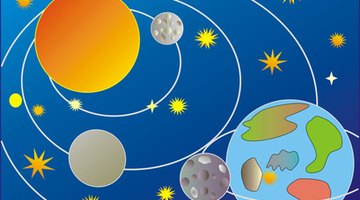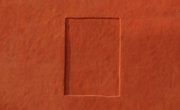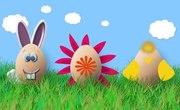Third Grade Solar System Projects
For elementary school students, science education and science projects can be the most fun and most rewarding part of their school day. Units on ecology, electricity, weather and animals are just a few of the science topics included in the curriculum. Another important topic is the solar system, and many classes also do solar system projects. There are a number of project ideas to help third graders learn about the solar system and to have fun while doing it.
Most classes have a solar system unit in their science activities or science unit plans, and many of these solar system project ideas can include solar system facts as well as science experiments using playdough, popsicle sticks, construction paper, bottle caps, worksheets and astronaut figures. Each planet project can be made uniquely, using moon phases in lessons with other out of this world designs. These projects can also be used at high school and homeschool levels for different types of learners.
By learning about the Earth and the surrounding planets, like Jupiter, Mercury, Neptune, Saturn, Venus, Uranus, and the debated Pluto, 3rd grade students, as well as 2nd grade, 4th grade and 5th grade students, can use solar system models to see interactive ways that the plants can aligns and rotate. Having their own solar system by using DIY lesson plans, elementary and middle school students can engage in solar system activities and art projects for higher learning in fun science. Different grade levels can use these solar models for different reasons, like a first grade class learning the names of the different planets.
Model
One of the most popular solar system projects is building a model version of the solar system. One way of doing this is to paint Styrofoam balls to represent the planets, then attach them with wire to one large Styrofoam ball in the middle, representing the sun. Another way is to create a model to scale on a football field, using an orange as the sun and calculating the distance of the other planets.
Cardboard Sun Hole
A cardboard sun hole is a simple way to demonstrate the power of the sun's rays. You'll need a thin piece of cardboard, a piece of paper and a pen. Use the pen to punch a hole in the cardboard, then hold the cardboard over the piece of paper in direct sunlight. You will notice a small white circle on the paper--an upside-down image of the sun. Move the cardboard forward or back to focus the circle. If a cloud passes over the sun, its shadow will cross the page in the opposite direction.
Mars Vacation

This is a fun research project to help third graders learn about the planets. Pretend that you are going to take a vacation, only to Mars instead of Hawaii or Florida. Have the students imagine what it would be like to be there, what they would see and do, what they would need to bring with them, and so on. Research facts on the planet Mars, then have the children write a story or travelogue about their trip.
Solar System Kit
There are a number of fun solar system assembly kits available online at amazon.com and other sellers. One of these kits is the glow-in-the-dark "Mega Cosmos" kit, which contains glow-in-the dark stars, as well as nine planets for the solar system. This and other kits can be assembled by third graders, either alone or with the help of an adult. Solar system kits come in two- and three-dimensional versions. There are also star ceiling kits, which have glow-in-the-dark star stickers to put on the ceiling.
Related Articles
References
Writer Bio
Kevin Blankinship began writing professionally in 2010. His work is featured online, focusing on business, technology, physical fitness, education and religion. Blankinship holds a bachelor's and a master's degree in comparative literature and is pursuing a doctorate in Arabic language and literature from the University of Chicago.










